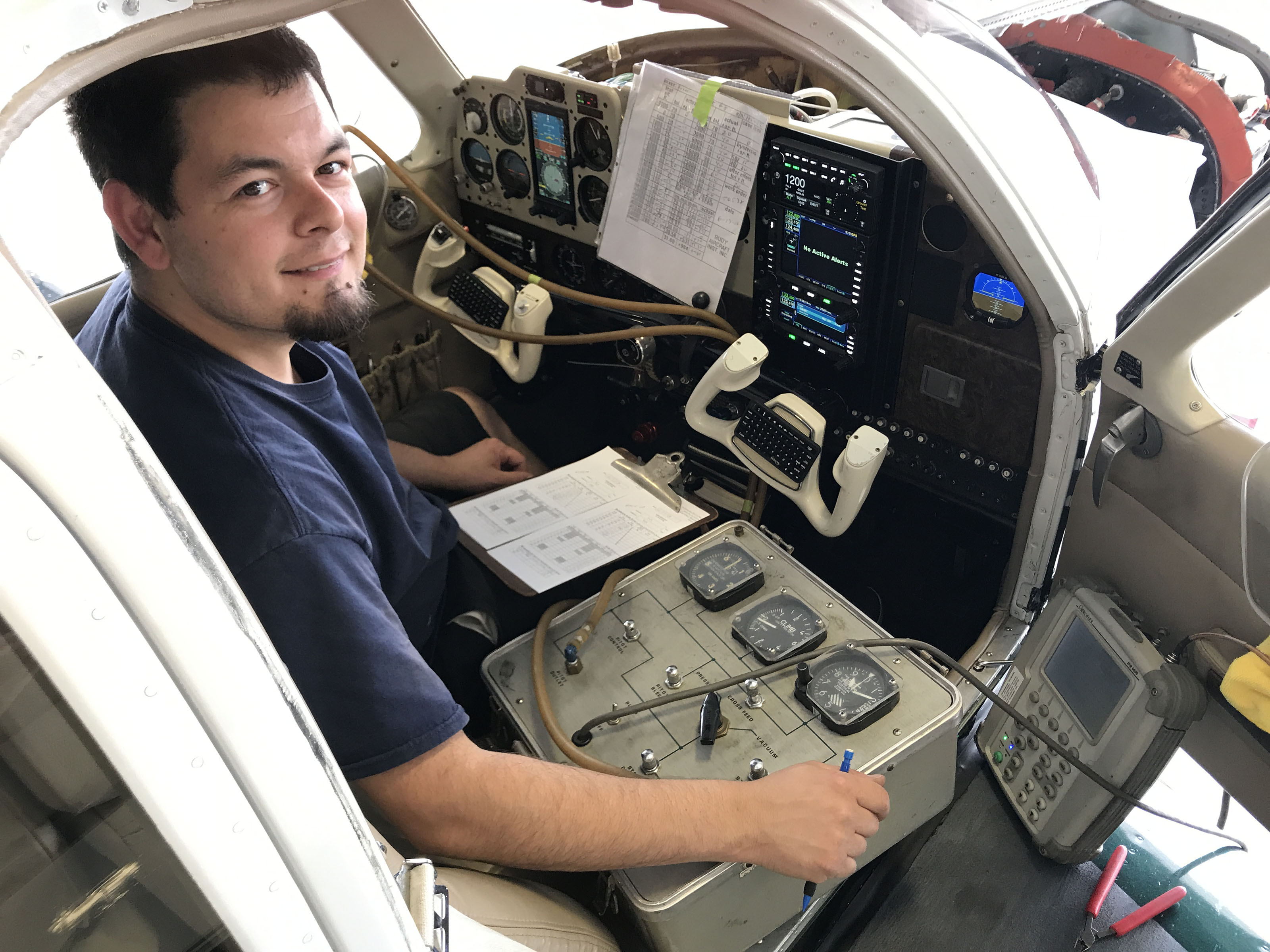Aircraft Maintenance: Altimeter and transponder checks
I recently installed an L3 Lynx 9000+ ADS-B transponder in my Beechcraft A36 Bonanza. It’s an amazing unit that displays traffic, weather, and even terrain on a high-resolution, touch-screen display in the same space that a traditional transponder would occupy. The 9000+ version that I installed even includes active traffic, allowing me to see traffic in the pattern at my local airport when I’m on the ground or not within range of an ADS-B ground station. The installation was straightforward and, as an A&P/IA, it was something I could legally do myself.
What I couldn’t do myself was complete the transponder certification check after the installation as well as the pitot/static altimeter check, which was also due at the time. Unless you’re flying an aircraft without avionics, chances are that you are subject to that biennial visit to the avionics shop to get your system checked and certified for flight in controlled airspace and under instrument flight rules.
Unfortunately, your local A&P/IA cannot perform these biennial checks even if they have the proper equipment. This is because, according to the regulations, only a certified avionics repair station can perform the transponder and altimeter portion of the inspections (A&Ps are permitted to do a simple static leak check following maintenance on the system). Becoming a certified repair station is no small task and the regulatory requirements put the certification beyond the reach of most small shops. That leaves the larger avionics shops, most of which are swamped with Automatic Dependent Surveillance-Broadcast Out (ADS-B Out) avionics installation work and have little time available for “fly in and wait” biennial IFR certifications. That drives up the cost to the point that one shop recently quoted me $700 just to do an IFR certification on an aircraft with an Aspen PFD, backup altimeter, and transponder. That’s $350 per year in “certification maintenance checks.”
None of this is to say that there isn’t value to the certification checks themselves. Few systems on our aircraft are as important to safe instrument flight as the altimeter and pitot/static system. If the system isn’t operating properly, you don’t really know how high you are or what your actual airspeed is; the critical information that almost all of our flying is based on. And, things do go wrong with these systems.

In my case, I brought my airplane to Rafael “Rafi” Tomai at Infinity Aviation in Nashua, New Hampshire. Tomai is a skilled avionics professional who gives the same attention and priority to an IFR certification customer as he does to someone doing a $30,000 avionics installation. Both customers get the same first-class treatment. I arrived at 10 a.m., and the airplane was quickly pulled into the hangar and readied for the checks. Hoses were hooked up to the pitot and static ports and the transponder analyzer was setup under the airplane.
Unfortunately, we quickly hit a road block when Tomai informed me that the static system had a major leak somewhere. This shouldn’t have come as a surprise, since few maintenance tasks in general aviation go as smoothly as planned. We started at the static port and worked our way forward, checking the system at each point along the way until we discovered the culprit: a split length of static tubing just behind the airspeed indicator. The fix was simple, but the process of identifying the leak took us close to an hour because the broken tube was hidden underneath some shrink tubing near a “T” fitting in the system.
With the leak fixed, the remainder of the check went smoothly, and I was quickly on my way back home with certification paperwork in hand and a surprisingly reasonable bill of about $500, which included the diagnosis and repair of the leak—a task Tomai graciously billed out at “about ½ an hour.” It was just one more reason that he will have my loyalty as a customer for years to come.
IFR certification checks are a necessary evil because, as my experience proves, things do go wrong with the critical systems that we rely upon for IFR flight. My only wish would be that someday the regulations could be updated to allow your local maintenance shop to perform the go/no-go certification checks. The equipment to perform the checks is expensive, but within reach for a decent maintenance shop. If they find a problem with an altimeter or transponder, they could easily refer the customer out to an avionics shop. It’s just one example of how a small regulatory change could make life a lot easier for both pilots and maintenance shops alike. Until next time, happy flying!

